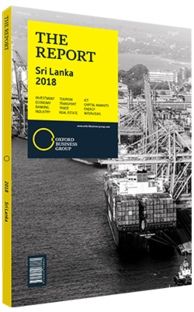Rajendra Theagarajah: Interview

Interview: Rajendra Theagarajah
How could the policy framework be altered to improve the investment environment?
RAJENDRA THEAGARAJAH: Broadly, there are three main areas I feel policymakers could improve upon. First, the investment environment would benefit from policymakers prioritising reform initiatives and their implementation. In recent years there have been numerous reforms across several sectors, but they have lacked focus in delivering substantial results. For the benefits of these changes to be felt, reforms and accompanying execution strategies will need to be better prioritised.
Second, the reform process integrates consultations with stakeholders in the private sector, with their views having been taken into account in policy documents such as Vision 2025, the prime minister’s 2017 Economic Policy Statement and the 2018 budget. However, communication is another key area that could be further improved, particularly in explaining the rationale of policy changes. Clarity will not only enable the changes to have a meaningful impact; investors will also place more confidence in the process. Lastly, there needs to be concrete steps taken to put an accountability framework in place. This would audit processes and develop a feedback loop within the policy framework.
Which sectors are emerging as growth drivers?
THEAGARAJAH: The focus on a national export strategy and trade policy, coupled with the impetus provided from regaining Generalised System of Preferences Plus status, is serving as a catalyst for growth in the exports sector. From this, not only traditional exports such as apparel will perform better, but emerging ones – like fruits and vegetables, seafood and others – are set to grow as well, though certain capacity constraints still need to be addressed. ICT is expected to do well, with the sector aiming to generate $5bn in foreign earnings by 2022. Tourism, which has grown exponentially since 2009, has the capacity to expand even more if we fine-tune our offerings and marketing strategy. Its potential is immense, as evidenced by the numbers attained by our peers in the Asian region. Sri Lanka’s aspirations to become a maritime hub will also boost industries like logistics. These key areas, among others, stand to benefit from current government initiatives.
In what ways could the competitiveness of small and medium-sized enterprises (SMEs) be enhanced?
THEAGARAJAH: One way this can be done is by promoting export-oriented SMEs, with innovation and entrepreneurship at the heart of this drive. Sri Lanka needs more firms selling higher-value goods and services in the global market, as this will go a long way to preventing the economy from being caught in the middle-income trap. Relevant state agencies should assist SMEs in developing channels that facilitate access to international markets. It will be important to enable SMEs to grow in a way that solves some of the technological skills gaps. Helping SMEs leverage on the existing networks of larger private enterprises and providing them with more access to existing research and development infrastructure will promote growth as well. These are priority areas for policymakers and will require both local and foreign investment.
What more can be done to harness the potential of foreign direct investment (FDI) inflows?
THEAGARAJAH: Higher levels of FDI could stimulate economic activity, create jobs and improve living standards, thereby driving the country’s overall economic growth. Sri Lanka has not yet fulfilled its potential for FDI inflows, but more public-private partnerships (PPPs) could help tap new investment opportunities. For example, PPPs could be used as means of channelling investment in the transport, infrastructure, ports and mining sectors, among others. For more PPPs to take place, however, Sri Lanka will have to maintain a level of certainty and continuity in the business environment while a more transparent PPP framework is put in place.
You have reached the limit of premium articles you can view for free.
Choose from the options below to purchase print or digital editions of our Reports. You can also purchase a website subscription giving you unlimited access to all of our Reports online for 12 months.
If you have already purchased this Report or have a website subscription, please login to continue.

